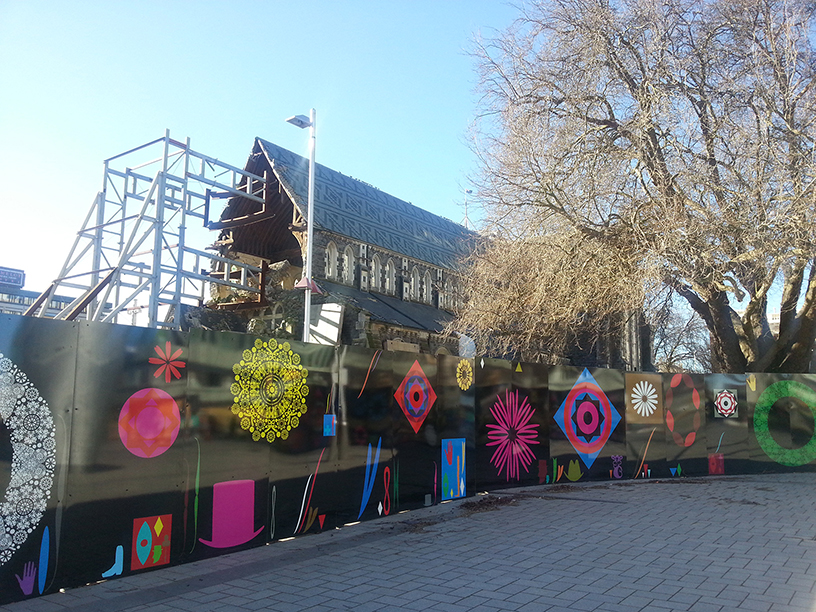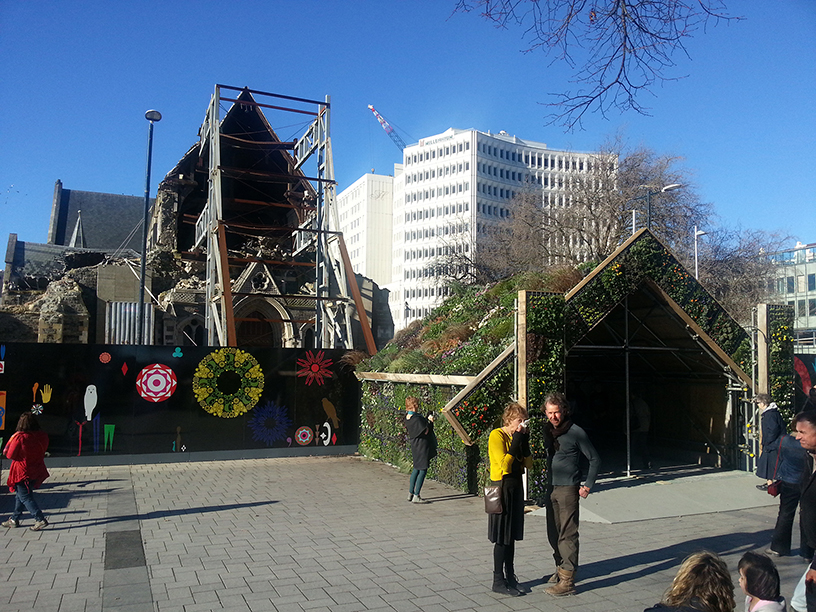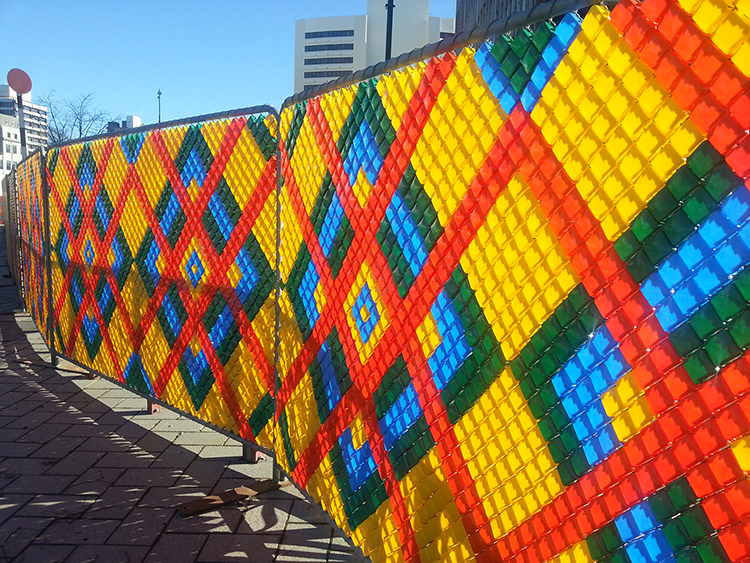Christchurch’s earthquake-battered Cathedral Square is alive with colour thanks to the vibrant artworks of two of New Zealand’s leading contemporary artists. Chris Heaphy (Ngāi Tahu) and Sara Hughes were invited to create artworks that would enliven the space for members of the public, who have been shut out of the Square for over two years. The result is a dynamic selection of works that can adapt and move as the city moves forward with its transitional improvements.
According to Mayor Bob Parker, re-opening Cathedral Square to the public is an important milestone that signals another significant step forward in the city’s recovery. Heaphy and Hughes were both keen to embrace that sense of optimism in their work.
The Transitional Cathedral Square Project is a Christchurch City Council initiative in collaboration with Te Rūnanga o Ngāi Tahu and Christchurch Art Gallery; and the artists have focused on engaging the public while referencing the historical importance of the area for Ngāi Tahu.
Heaphy’s work – attached to the wire cordons surrounding the Cathedral – features signs, symbols and geometric architectural elements on a black background, which provide a backdrop for his ‘living, planted whare.’ Hughes’ contribution of a towering flag wall and fences filled with inserted plastic cups that recall embroidery designs, tukutuku panels and slate patterns on the Cathedral roof.
The Christchurch Cathedral and Cathedral Square are iconic symbols of Ōtautahi / Christchurch and important reminders of the city’s Church of England roots. For Ngāi Tahu the area also serves as a reminder that the first Anglican Church in greater Christchurch was a Ngāi Tahu whare karakia (church) in Pūari at Koukourārata/Port Levy.
“Ngāi Tahu would like to congratulate both Sara Hughes and Chris Heaphy (Ngāi Tahu) for incorporating both church and Māori symbols into their contemporary art,” says Te Rūnanga o Ngāi Tahu Kaiwhakahaere Tā Mark Solomon.
Heaphy has created a ‘contemporary whare’ that forms a visual link to the physical, cultural and spiritual life of Ngāi Tahu and to the Anglican Church. Through his plant-covered ‘whare,’ we are also reminded of the early kāinga nohoanga, Pūari, a major mahinga kai (customary food gathering place), which occupied the nearby banks of the Ōtākaro (Avon) River. His vibrant hoardings draw inspiration from the Cathedral’s famous Rose Window and follow his practice of addressing questions about culture and identity.
Sarah Hughes has created colourful hoardings formed by inserting thousands of painted cups into the wire mesh of security fencing. This ‘pixellated’ effect forms floral imagery that is inspired by the Johnstone Collection of the University of Canterbury.
“We are confident these thought-provoking works will help people reconnect with Cathedral Square as it moves into the future,” says Tā Mark.
The artworks have been designed so that can be reconfigured within the Square, throughout its transitional phase and while more permanent plans are established.

Heaphy’s hoardings circling the cathedral.

Heaphy’s ‘planted whare’ in front of the cathdral.

Colourful hoardings by Sara Hughes.